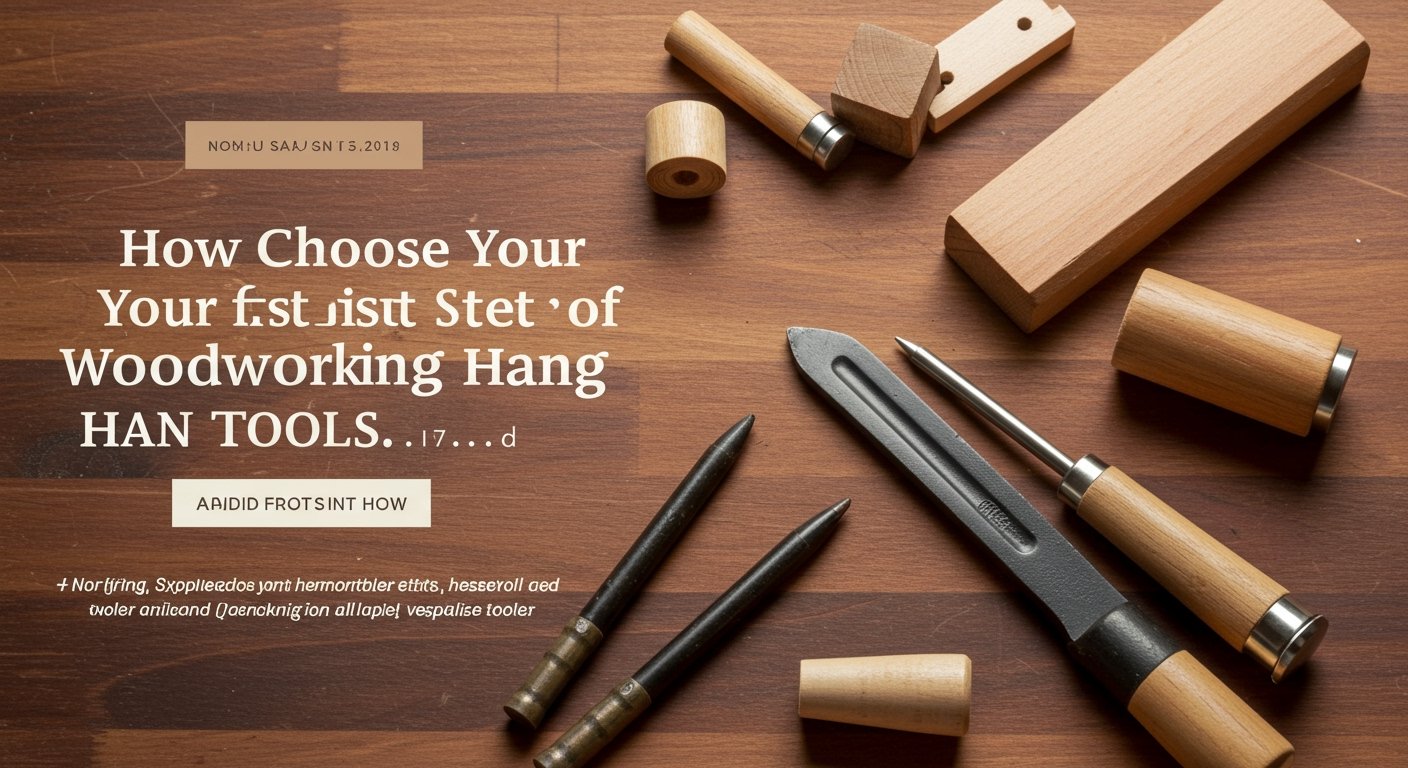Embarking on the journey of woodworking is an incredibly rewarding experience, offering a blend of creativity, skill development, and the satisfaction of crafting something tangible with your own hands. For many aspiring craftspeople, the first step is often the most daunting: how to choose your first set of woodworking hand tools for beginners. With a vast array of tools available, it’s easy to feel overwhelmed. This guide will walk you through selecting the right essential hand tools for woodworking, helping you build a solid foundation without breaking the bank.
Woodworking as a hobby and industry is thriving. The global Hand Tools & Woodworking Tools Market was valued at USD 9.09 Billion in 2023 and is projected to reach USD 13.51 Billion by 2032, growing at a Compound Annual Growth Rate (CAGR) of 4.5% from 2024-2032. This growth is significantly fueled by the increasing popularity of home improvement and DIY projects, with that segment alone expected to account for USD 12.67 billion in 2023, growing at a CAGR of 4.0% from 2023 to 2032. It’s clear that more and more people are discovering the joy of working with wood, and hand tools are often the gateway.
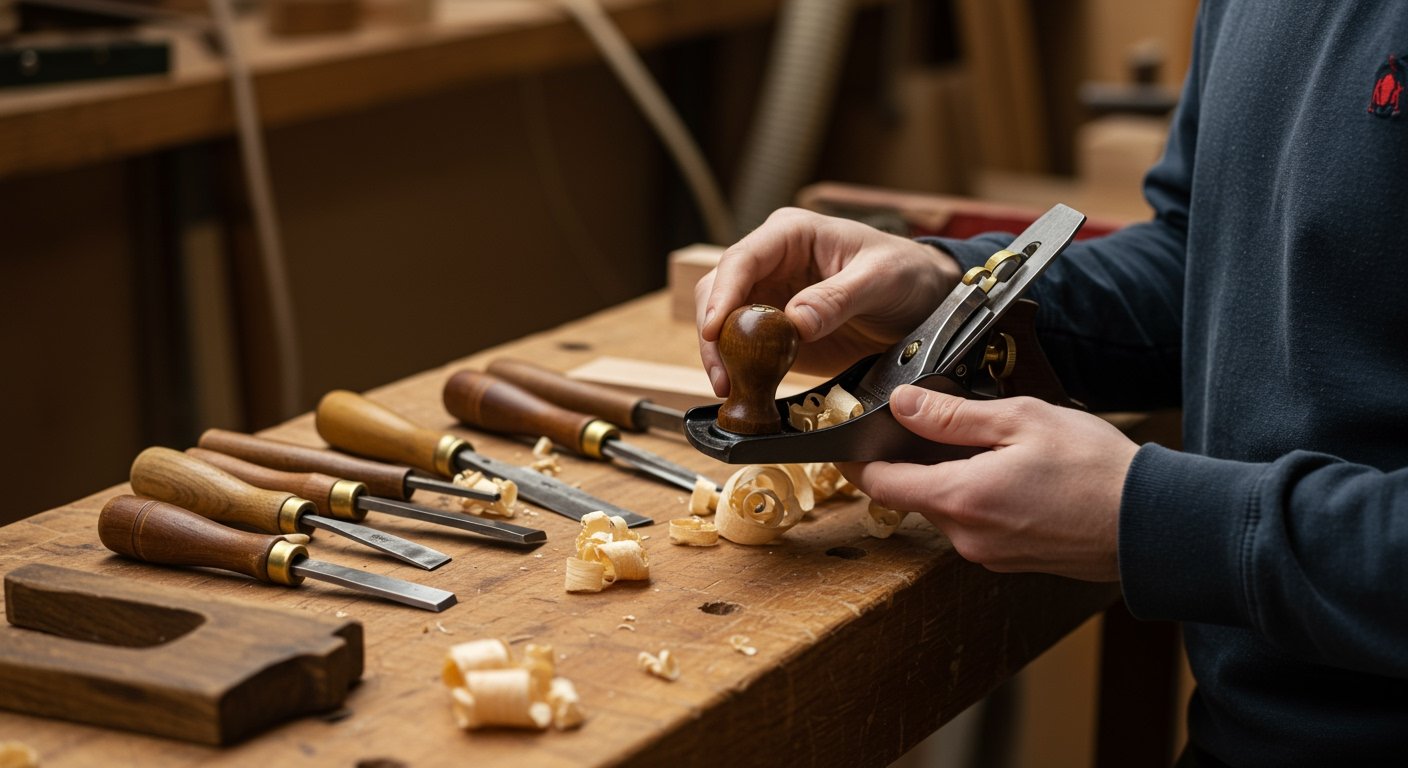
Why Start Woodworking with Hand Tools?
Before diving into a beginner woodworking tools list, let’s explore why many choose to begin with traditional woodworking hand tools for beginners over power tools. Hand tool woodworking offers unique benefits, fostering a deeper connection to the craft and the material. It’s a quieter, often more meditative process, free from the noise and dust associated with many power tools. This allows for greater precision and control, making it ideal for learning fundamental skills. [3, 8, 9]
Is it cheaper to start woodworking with hand tools or power tools?
Generally, yes, it can be significantly cheaper to start woodworking with hand tools. While high-end hand tools can be expensive, you can acquire useful entry-level tools for a much lower initial investment. The estimated cost to get started with woodworking as a hobby can realistically be in the $50–200 range for useful entry-level tools, based on 2020 prices. Power tools, conversely, often require a larger upfront investment for the tools themselves, plus accessories like specialized blades, safety equipment, and dust collection systems. Moreover, hand tools typically have lower maintenance costs and don’t require electricity, making them more versatile for different workspaces. [3]
Essential Woodworking Hand Tools for Beginners: Your Starting Kit
So, what hand tools do you need for woodworking to truly get started? The goal is to select versatile tools that can perform multiple tasks and help you learn core techniques. Think of these as your basic woodworking hand tools kit, designed to get you making sawdust and building your first projects.
Measuring & Marking Tools
Accuracy is paramount in woodworking. You can’t cut wood shorter, so precise marking is crucial.
- Measuring Tape: A basic retractable tape measure is indispensable for larger dimensions.
- Ruler: A good quality steel ruler (12-inch or 24-inch) for smaller, more precise measurements.
- Squares (Combination Square & Try Square): These are vital for marking 90-degree angles and checking squareness. A combination square is particularly versatile for measuring depth and angles beyond 90 degrees. [15]
- Marking Gauge: Used to scribe lines parallel to an edge, essential for joinery and cutting accurately.
- Marking Knife/Pencil: A sharp marking knife provides a fine, crisp line that guides your saw or chisel much better than a pencil. A carpenter’s pencil is good for rougher work.
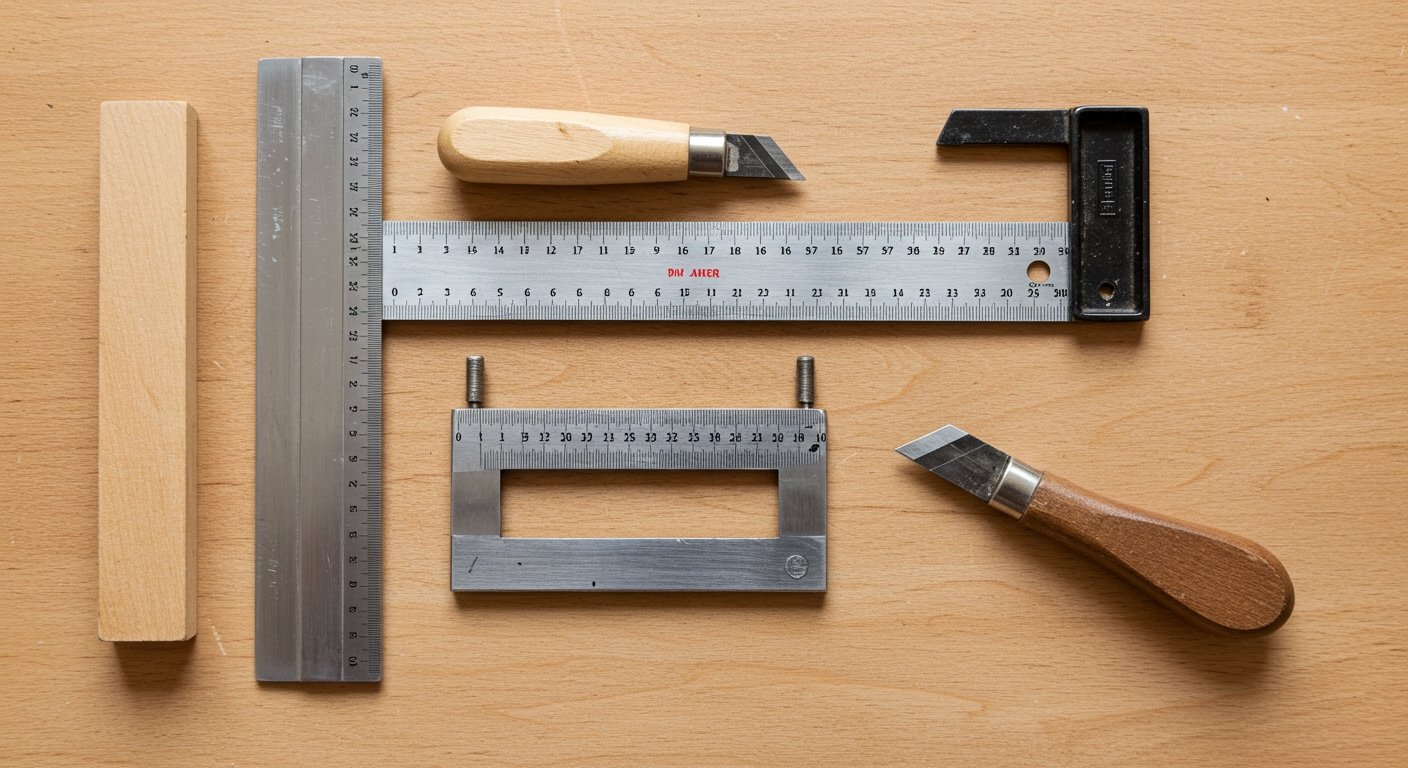
Cutting & Shaping Tools
These are the tools that transform raw lumber into your desired shapes.
- Saws (Japanese Pull Saw or Western Backsaw): For beginners, a good quality hand saw is a must. A Japanese pull saw, which cuts on the pull stroke, is often easier for newcomers to control. A backsaw is also excellent for precise cuts, especially for joinery. [15]
- Chisels (Essential Chisels Woodworking Beginners): Chisels held the highest market share in the woodworking tools market in 2020 and were expected to continue dominating the market, underscoring their importance. Start with a set of three to four bench chisels in common widths (e.g., 1/4″, 1/2″, 3/4″, 1″). Quality chisels will hold an edge better and be easier to sharpen. [15]
- Hand Plane (Hand Plane for Beginners Woodworking): A block plane or a No. 4 smoothing plane is an excellent first plane. They are versatile for small tasks, chamfering edges, and achieving smooth surfaces. [10, 15]
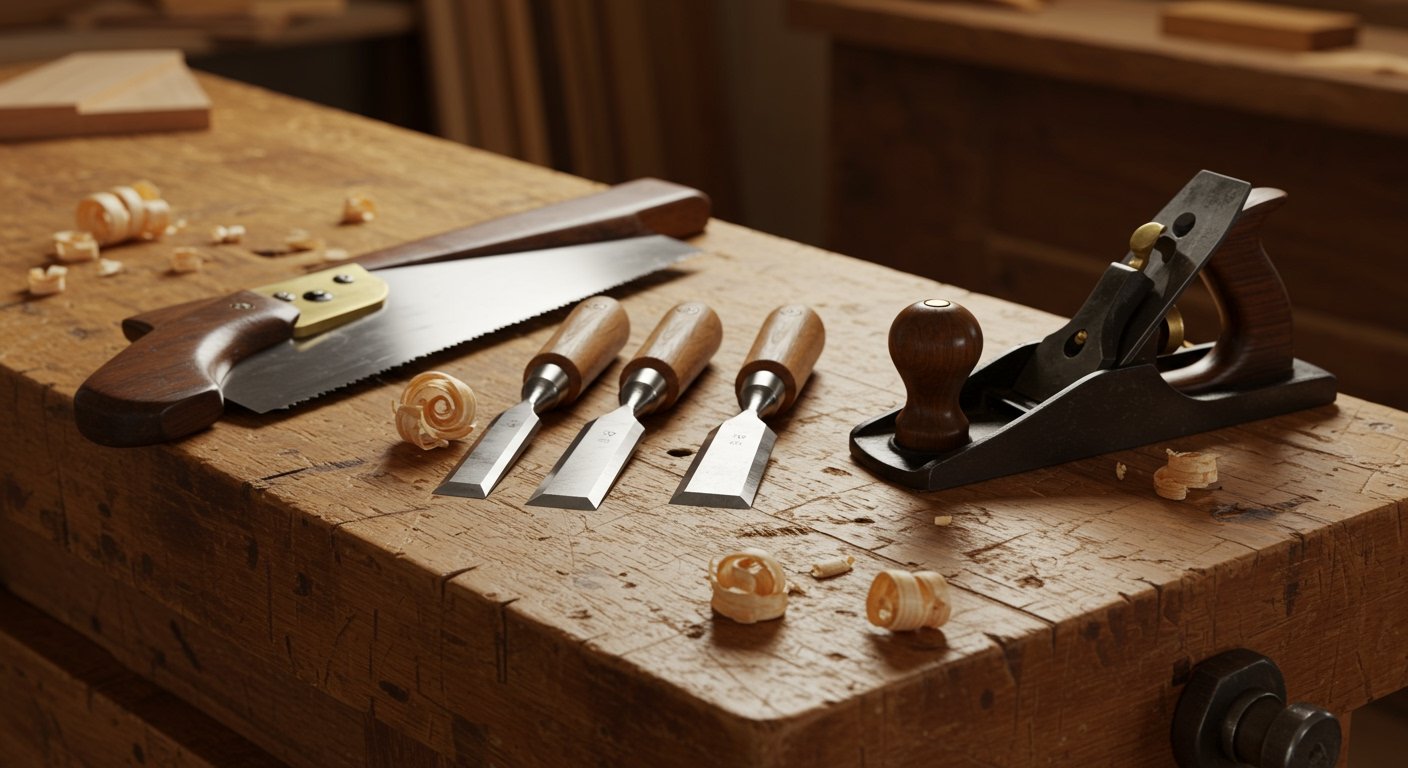
Striking Tools
These tools work in conjunction with your chisels and other implements.
- Mallet: A wooden or rubber mallet is crucial for striking chisels. Never use a metal hammer on chisel handles unless they are specifically designed for it, as it can damage the handle.
- Claw Hammer: While not primarily for fine woodworking, a claw hammer is useful for general tasks like driving nails (for temporary jigs or basic construction) or assembling projects. [15]
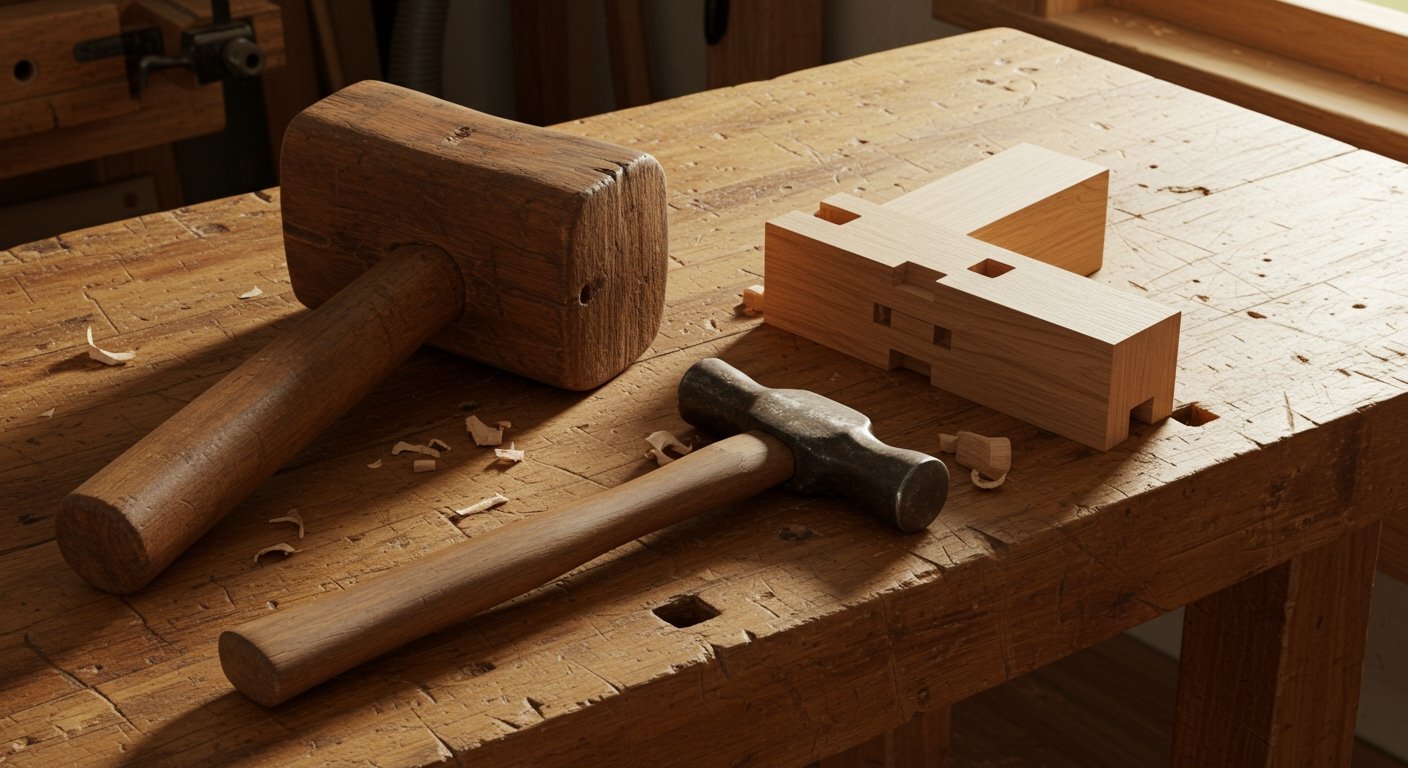
Clamping & Holding Tools
Good work holding is critical for safety and accuracy.
- F-style Clamps or Bar Clamps: Start with 2-4 clamps in various sizes (12-inch, 24-inch). They are essential for holding workpieces while gluing, cutting, or chiseling. [15]
- Bench Vise (Optional but Recommended): While not strictly a hand tool, a basic woodworking bench vise can greatly improve your work holding capabilities as you progress.
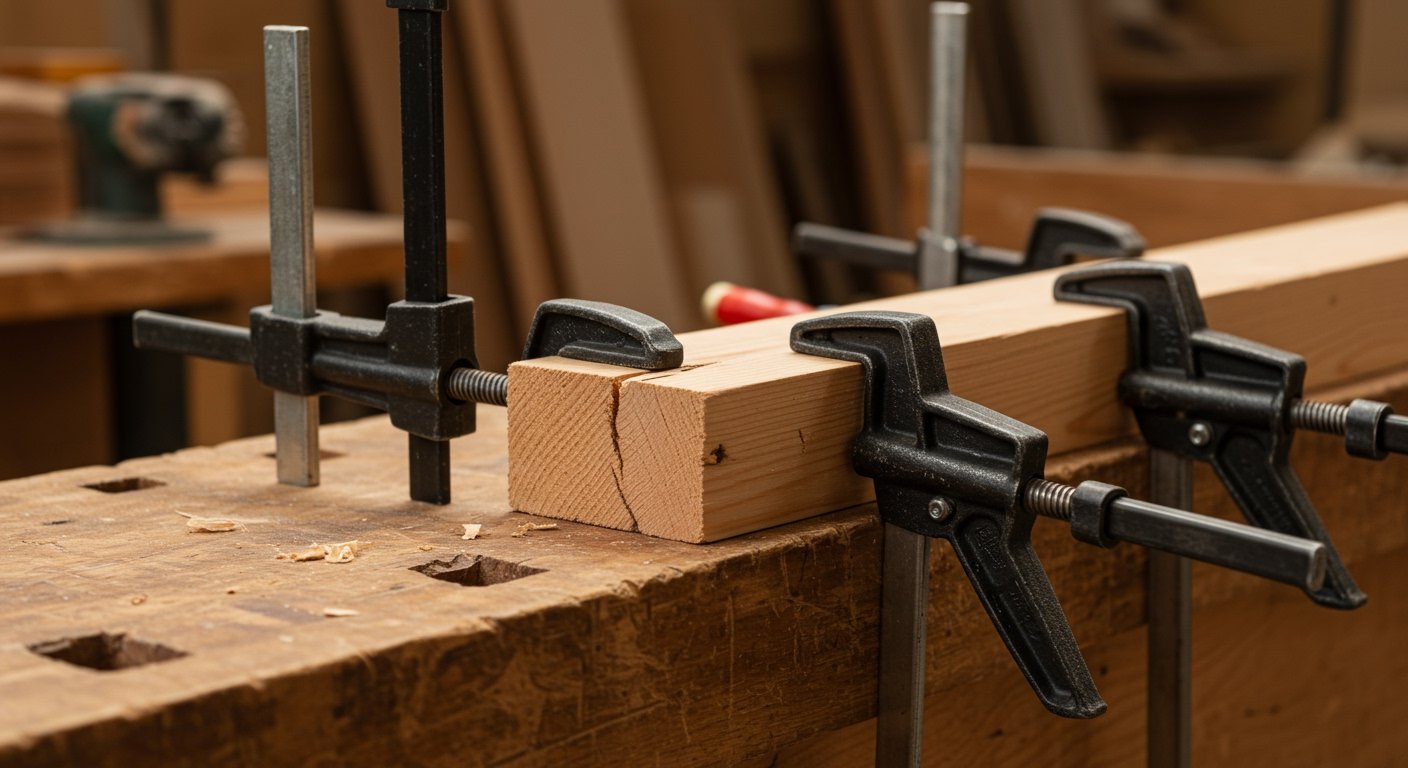
Sharpening Supplies
Sharp tools are safe tools and make woodworking enjoyable. Dull tools are frustrating and dangerous.
- Whetstones or Diamond Plates: A medium and fine grit sharpening stone are essential for keeping your chisels and planes razor-sharp. [3]
- Leather Strop & Honing Compound: For putting a final, mirror-like edge on your tools.
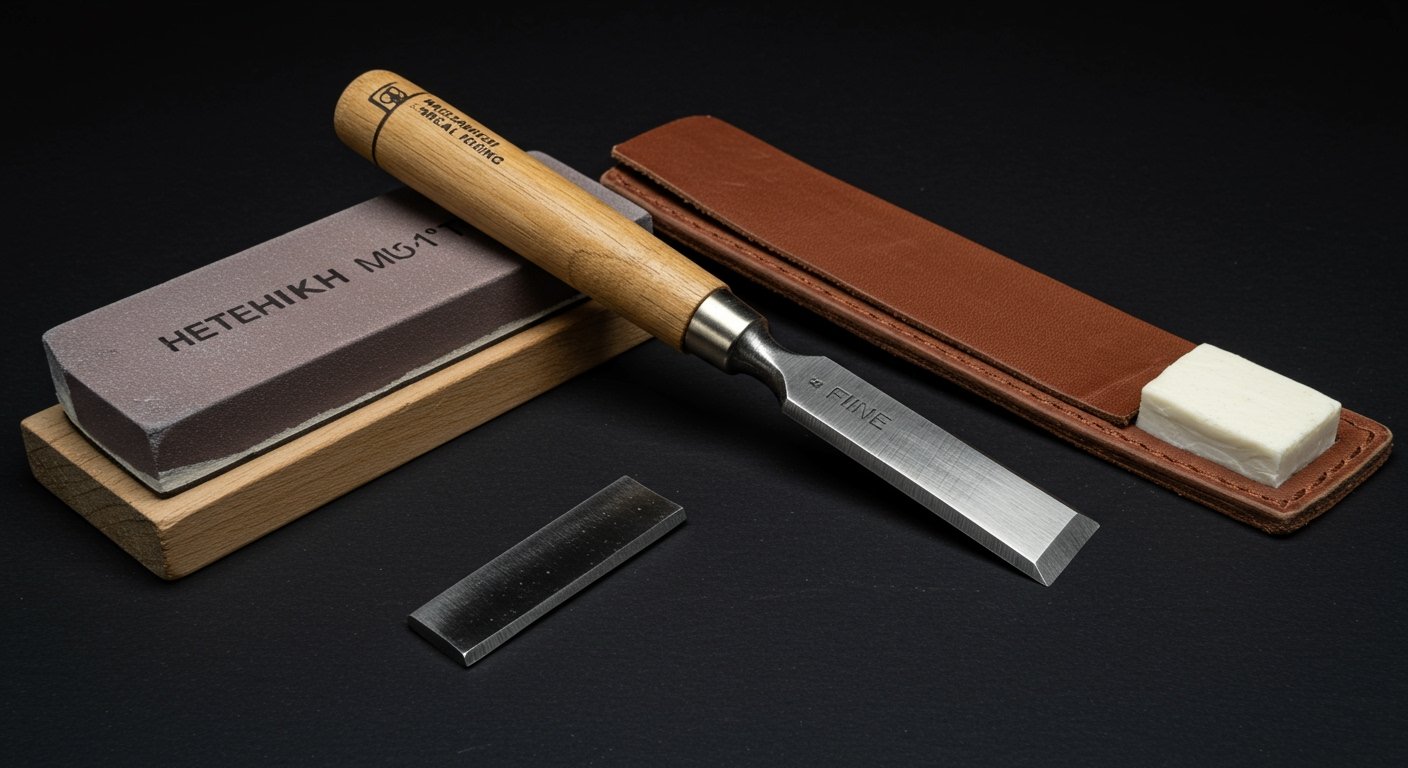
How Do I Choose Quality Hand Tools for Woodworking?
When buying first woodworking tools, prioritize quality over quantity. A few good tools will serve you better and last longer than many cheap ones. Here’s what to look for:
- Material Quality: For chisels and plane blades, look for high-carbon steel or tool steel that can hold a sharp edge. For handles, dense hardwoods like beech or hornbeam are durable and comfortable.
- Fit and Finish: Inspect tools for good construction. Are the handles securely attached? Are the surfaces smooth and free of defects? A well-made tool often indicates attention to detail in its manufacturing.
- Ergonomics: Hold the tool. Does it feel comfortable in your hand? Does it balance well? While subjective, good ergonomics reduce fatigue and improve control.
- Sharpenability: High-quality tools, especially edge tools, should take and hold a keen edge when sharpened properly.
- Reputation: Research reputable brands known for producing quality hand tools. While they might cost a bit more, they are an investment in your woodworking journey.
Building Your First Woodworking Hand Tool Set on a Budget
Starting woodworking with hand tools doesn’t require draining your savings. Here’s how to build your first woodworking tools for beginners budget-consciously:
1. Prioritize: Don’t buy everything at once. Start with the absolute essentials: a good measuring tape, a combination square, a marking knife, one or two chisels, a basic saw, and sharpening supplies. You can add more tools as your skills grow and projects demand them.
2. Buy Used: Flea markets, antique stores, and online marketplaces can be treasure troves for vintage hand tools. Old chisels and planes, often made of superior steel, can be restored to excellent working condition with some cleaning and sharpening. This is a fantastic way to acquire must-have hand tools for beginners without the new tool price tag. Just be prepared for a bit of refurbishment.
3. DIY Solutions: For items like mallets or bench hooks, you can often make them yourself with very basic tools, saving money and gaining experience simultaneously.
Getting Started: Practice and Patience
Once you have your first woodworking hand tool set, the most important step is to start using them! Don’t be afraid to make mistakes. Practice basic cuts, chiseling techniques, and planing on scrap wood. Watch videos, read books, and consider joining local woodworking communities. [12] Safety is paramount; always wear appropriate eye protection and ensure your tools are sharp and well-maintained. Always understand the proper use and safety guidelines for each tool before you begin. [1, 2, 4, 5, 6]
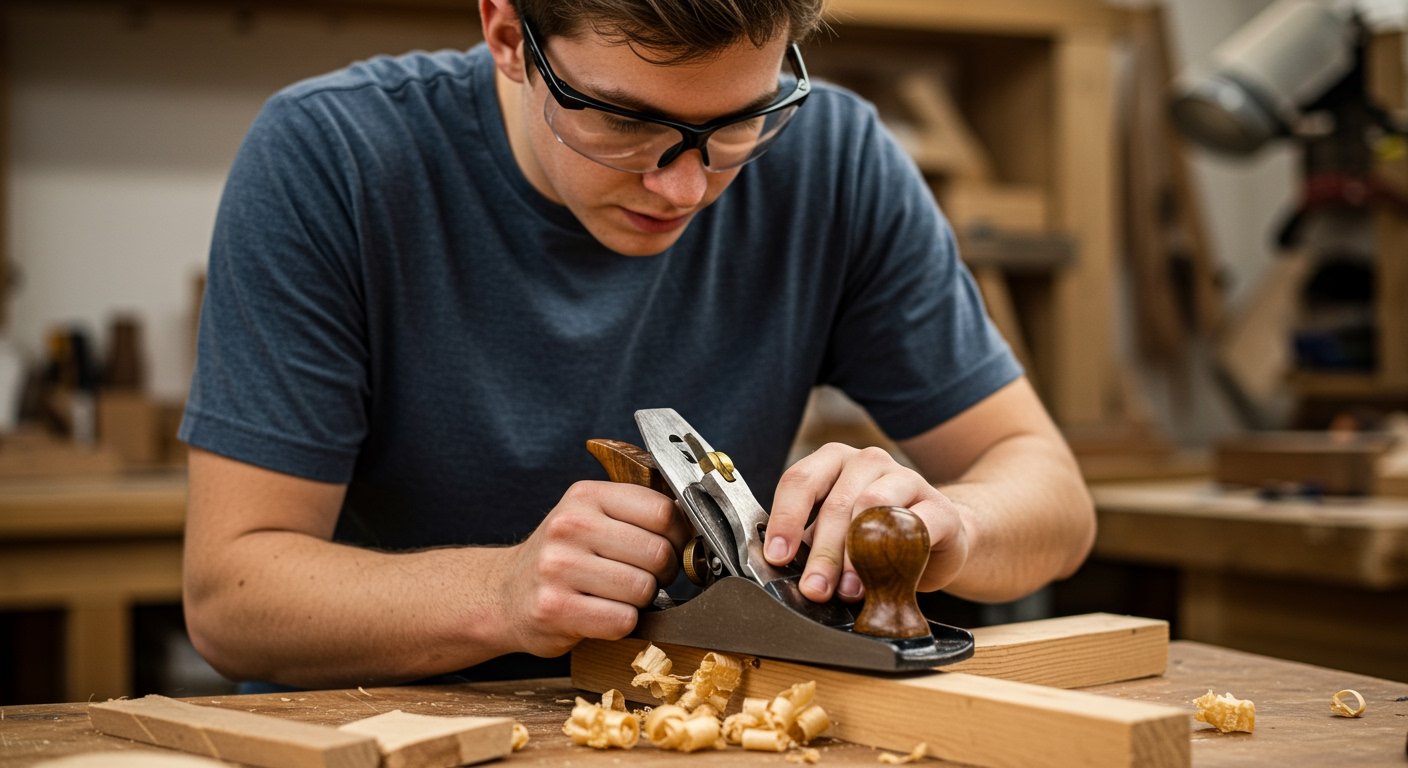
Conclusion
Choosing your first set of woodworking hand tools is an exciting step into a fulfilling hobby. By focusing on essential, versatile tools and prioritizing quality, you’ll create a solid foundation for your woodworking journey. Remember that the best hand tools to start woodworking are those you’ll actually use and master. Enjoy the process of learning, creating, and connecting with the timeless craft of working with wood.
Frequently Asked Questions
What are the absolute essential hand tools for beginning woodworking?
For starting woodworking, you’ll need a reliable measuring tape and ruler, a combination square, a marking knife, a Japanese pull saw or backsaw, a set of 3-4 bench chisels, a block plane or No. 4 smoothing plane, a wooden mallet, a couple of F-style clamps, and sharpening supplies like whetstones.
Is it better to buy new or used hand tools for a beginner?
Both new and used tools have merits. New tools offer immediate usability, but quality vintage tools (especially chisels and planes) can often be found for less and perform exceptionally well after restoration. Buying used is a great budget-friendly option for acquiring a quality first woodworking hand tool set.
How much should I expect to spend on my first set of woodworking hand tools?
You can realistically get started with a useful entry-level set of hand tools for around $50–200, based on 2020 prices. This budget allows for essential items, especially if you consider buying some quality used tools and focusing on versatility.
Why is sharpening so important for hand tools?
Sharp tools are crucial for effective and safe woodworking. A sharp edge cuts cleanly, requires less force, and is less likely to slip or cause fatigue. Dull tools can tear wood, lead to inaccurate cuts, and significantly increase the risk of injury due to the extra force needed to operate them.
